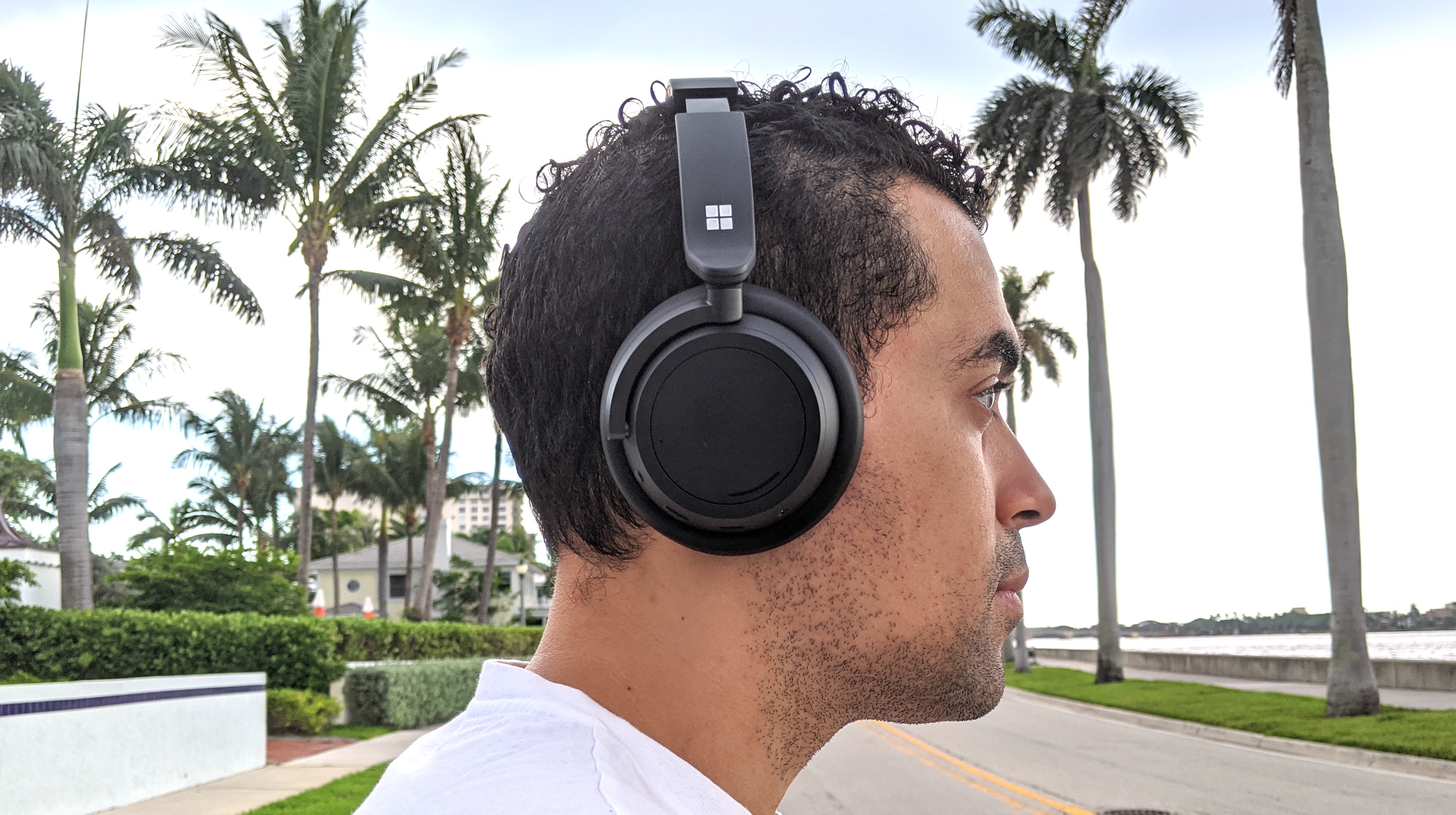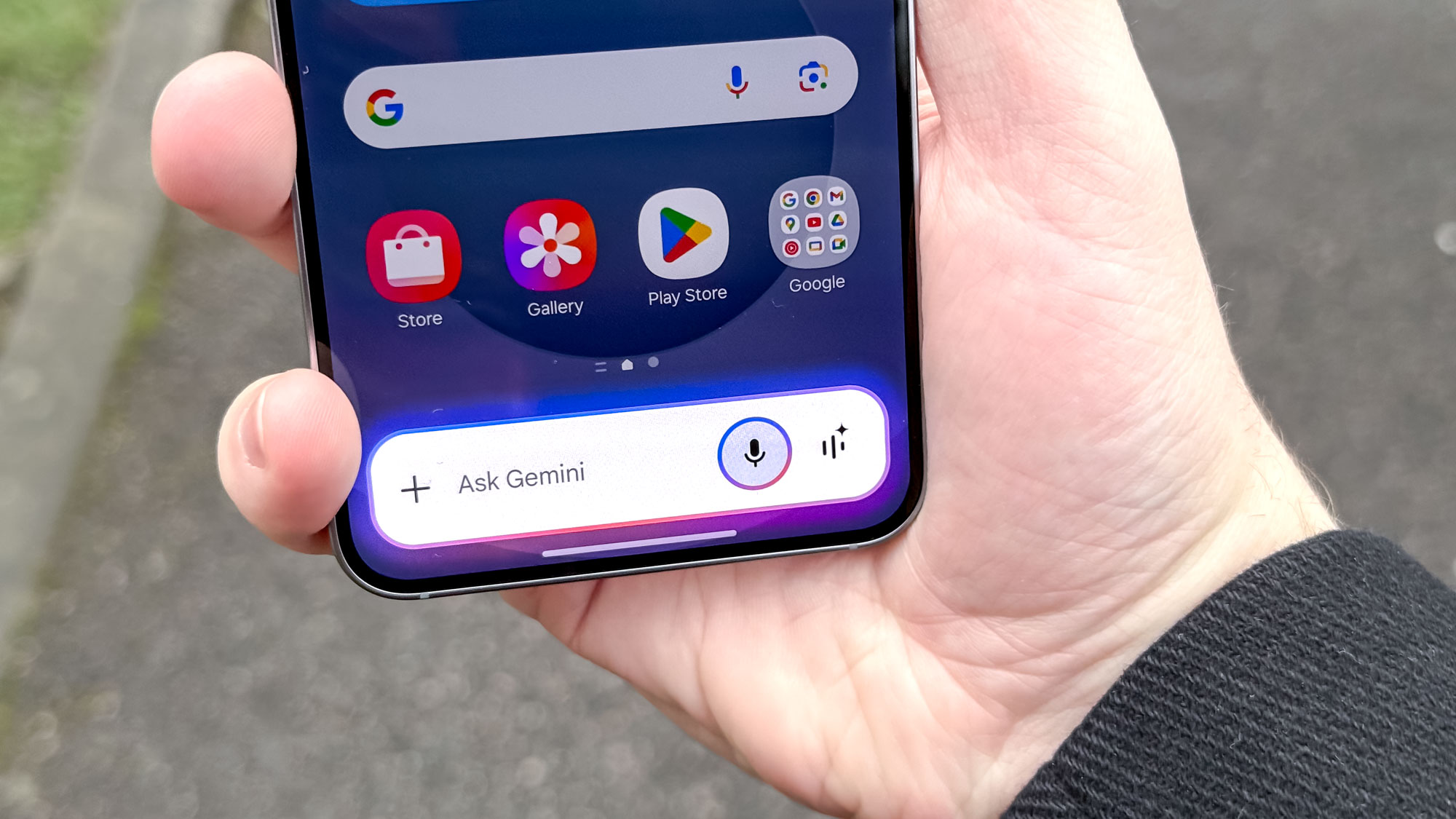Tom's Guide Verdict
Dynamic in sound and functionality, the Microsoft Surface Headphones 2 is a noise-canceller that silences the skeptics.
Pros
- +
Vibrant, well-balanced sound
- +
Innovative controls
- +
13 levels of active noise cancellation
- +
Launched at a lower price than original
- +
Excellent wireless performance
Cons
- -
Battery life is still low
- -
Surface Audio app needs more features
- -
Can’t fold or be stored compactly
Why you can trust Tom's Guide
The Surface Headphones were a successful debut for Microsoft, and the all-new Surface Headphones 2 is a notable upgrade that outshines its predecessor. These wireless cans maintain the clean appearance and dynamic sound of the original, while welcoming moderate improvements that keep the series in the best noise cancelling headphones conversation.
However, not every upgrade hits its mark. The increased battery life (upped from 15 to 20 hours) is still considered low in its class. Microsoft’s new companion app does bring back popular features that enhance productivity and sound quality, but also lacks some of the unique ones (e.g. Cortana, Spotify integration) some of us enjoyed on the previous version.
- Check out the competition: Bose 700 Headphones review
- And read our Sony WH-1000xM3 review
But if you want some cool-looking wireless headphones with highly intuitive controls, terrific sound, and reliable ANC, and at a lower price than the Bose 700 and Sony WH-1000xM3, read our Microsoft Surface Headphones 2 review below to find out why it makes for an enticing purchase.
Colors: Light Gray, Matte Black
Battery life: 20 hours
Noise cancellation: Yes
Size: 8.03 x 7.68 x 1.89 inches
Weight: 10.22 ounces
Connectivity: Bluetooth 5.0
Microsoft Surface Headphones 2: Price and availability
The Microsoft Surface Headphones 2 are sold for $250 at major online retailers, including Amazon and Best Buy or directly from Microsoft. This version comes in at lower price point than the original, which previously launched at $350. These headphones are available in two colors: Light Gray or Matte Black.
Microsoft ships the Surface Headphones 2 with a hard-shell carrying case, aux cable, USB-C charging cable, warranty, and command sheet that lists all of the controls.
Microsoft Surface Headphones 2: Design
No radical changes were made on the design end, as Microsoft sticks with the same detailing, materials, and silhouette as the original. Durable, soft-touch plastic combined with plush padding and sturdy aluminum; the Surface Headphones 2 boasts sleek aesthetics that complement the Surface brand. The black version is definitely an eye-grabber and something you’ll admire when unboxing the headphones.
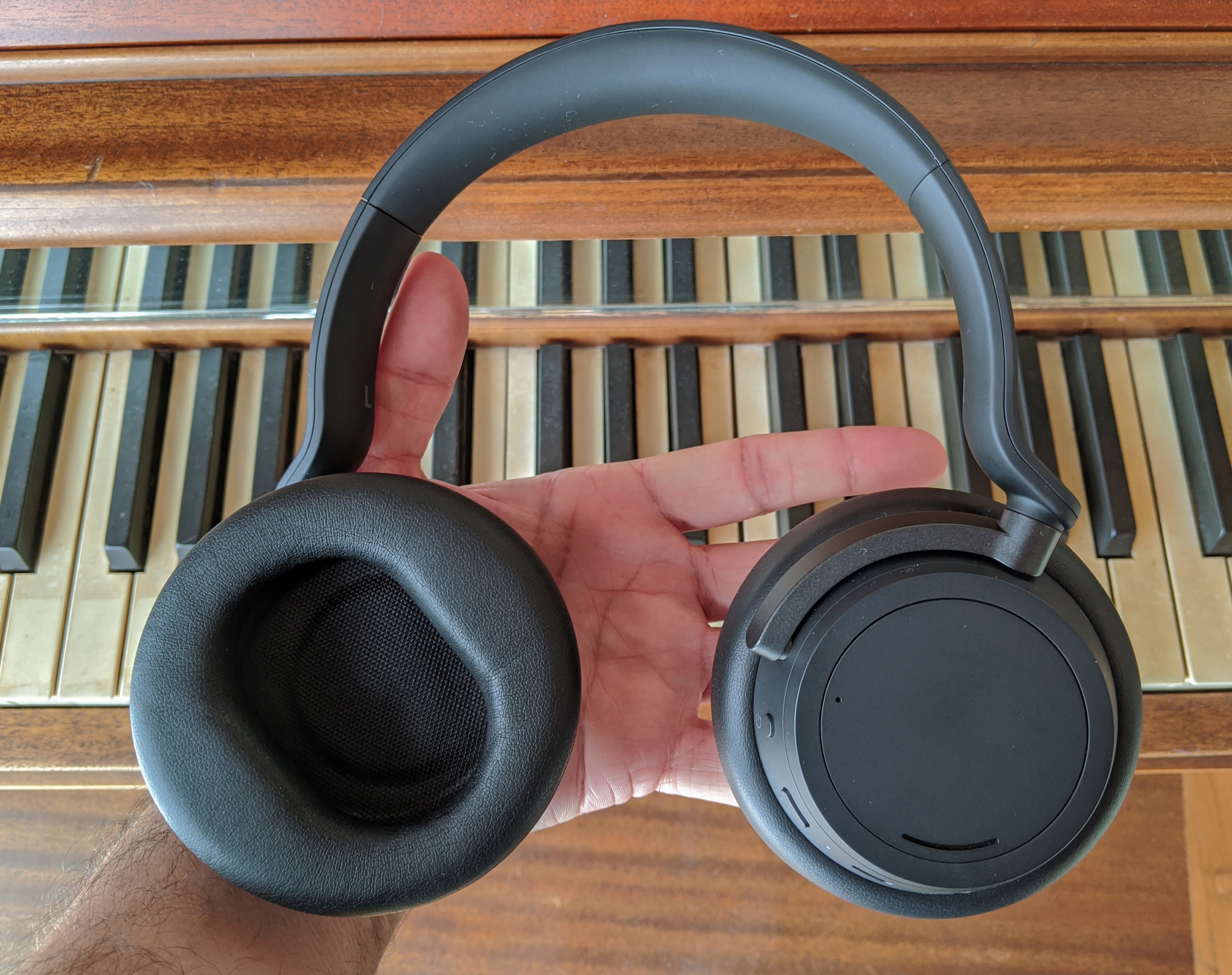
Construction is adaptive and sturdy. Each earcup can now rotate 180 degrees, a small but noticeable change that lets you easily stow away the headphones in the accompanying case or prop around your neck. My only complaint is that they don’t fold up. Overall, these cans are solidly built and look like something you would find sitting in first class next to other upscale models.
Get instant access to breaking news, the hottest reviews, great deals and helpful tips.
Some signature details remain intact, including the company logo that is beautifully embossed on the striking arc above the ear cup. Microsoft also made sure to keep the design uniform, so it looks like every component is molded together. You’ll notice there aren’t any visible screws, or even seams on the headband. It’s a move that Bose clearly took notice of when creating its ultramodern looking 700 Headphones.

Accessories haven’t changed much either. Inside the handsome woven travel case are an aux cable, USB Type-C charging cable, and a command sheet on the inside sleeve that breaks down how to use the headphones. The latter is greatly appreciated and is a better alternative to the standard quick-start guide bundled with all other headphones. Microsoft does a wonderful job of displaying and packaging everything.
Microsoft Surface Headphones 2: Comfort and fit
There is no difference from the previous model in terms of fit and feel. The Surface Headphones 2 weighs the same at 10.2 ounces, which is heavier than competitors such as the Bose 700 (9 ounces) and WH-1000xM3 (9.7 ounces). Despite this, the headphones rest gently on both the skull and ears for extend periods of listening.
I sported them for up to 4 hours daily, and it was only around the halfway point where I felt slight soreness. That is pretty good and should speak to the level of comfort these headphones deliver. The memory foam padding on both ear cups is soft and provides great cushioning. Something else that has remained untouched are the large, circular cutouts, which accommodate bigger ears, but have very little ventilation. Your ears might feel a bit clammy after an hour or two, though this is only if you’re wearing the headphones in hot environments.
The headband doesn’t offer much room for larger heads due to its limited extender length; I would say it’s about 2 to 3 notches shorter than other over-ear wireless headphones. Others will be satisfied with the Surface Headphone 2’s on-ear stability. Setting the headphones to the shortest length does apply pressure on the head, so I advise going 1 or 2 notches higher to establish a proper and snug fit.
Microsoft Surface Headphones 2: Smart controls
Equipped with touch panels, on-ear detection, digital assistant support, and dials on both ear cups, these are arguably the most intuitive wireless headphones available. The dials are the most promising of the batch, allowing for seamless control over volume (right ear cup) and noise-cancelling (left ear cup) levels. They are fun and simple to operate and work flawlessly.
The touch controls haven’t changed at all, which is awesome news, as the tap gestures are responsive and can be executed on either ear cup: play/pause (tap once), answer call/skip song (tap twice), previous track (tap three times) and activate Cortana/decline call (long press). Microsoft designed the panels to be slightly more sensitive to touch, and this actually works in favor of the user. How so? You can perform swipes instead of taps, something I found to be more effective and super unique to the user experience. It works well to play/pause tracks and you can skip tracks as well by performing two quick swipes forward (think like the DJ) without removing your finger from the panel. That’s ingenuity right there.
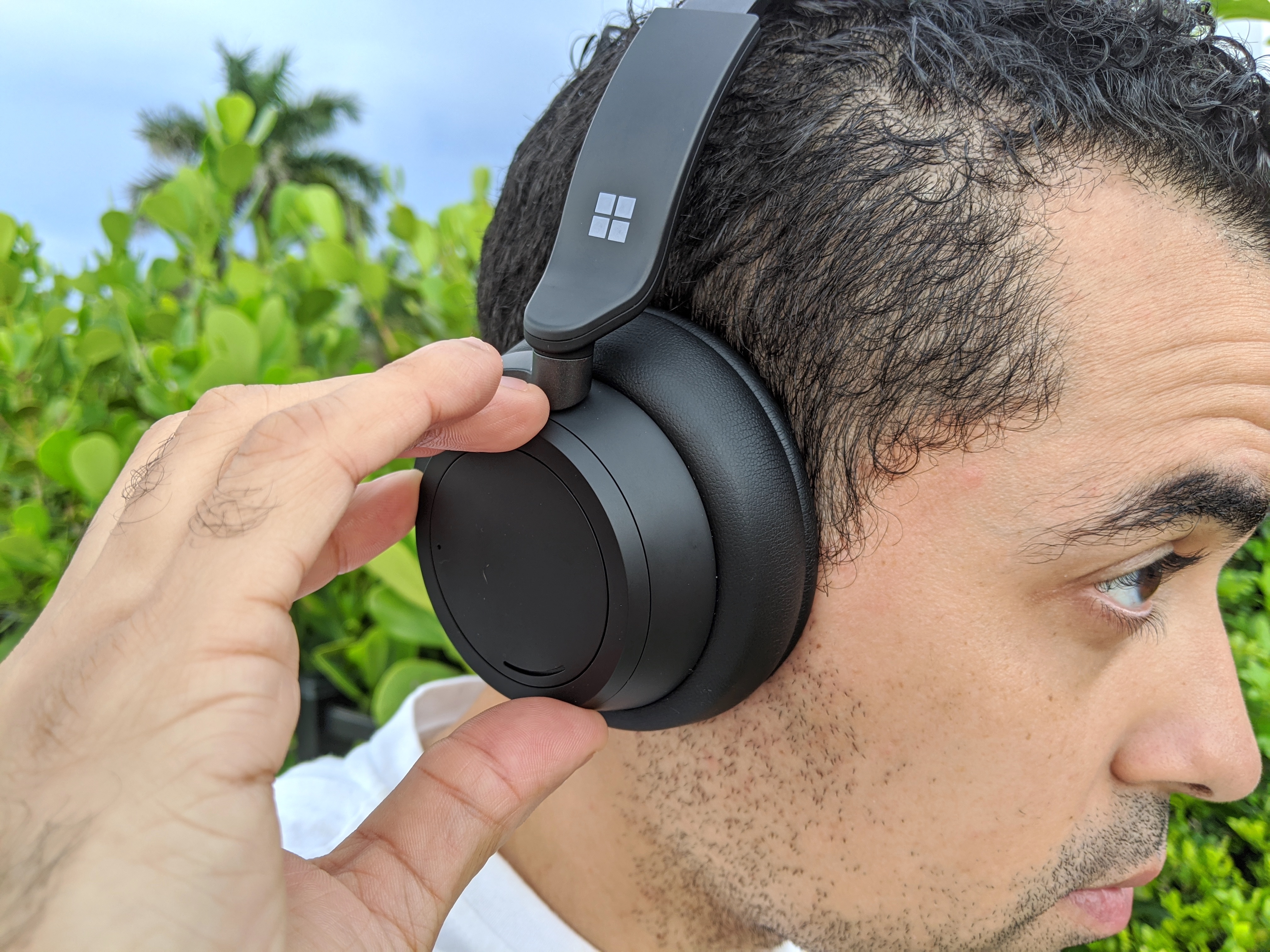
If you’re someone who relies on Siri or Google Assistant to take care of your daily tasks, the Surface Headphones 2 will be of great service to you. Speech recognition is impeccable, and the mics picks up every syllable and interpret commands quickly. I did encounter one bug with Google Assistant; it would repeat results about a minute after performing the command. Other than that, the feature is a smooth operator on all platforms. Sadly, Microsoft decided to ditch Cortana this time around, which is a downer for Windows fanboys.
Not all of the controls are perfect. The smart-pause feature that automatically pauses music when removing the headphones isn’t accurate and has a 2-second delay. In addition, the mute button and touch gestures are disabled when using the aux cable.
Microsoft Surface Headphones 2: Active noise cancellation and ambient listening
I was impressed with the active noise cancellation on the first-gen Surface Headphones. And while I’m still satisfied with the results on these cans, I barely noticed any difference between the two models. They come programmed with 13 adjustable levels of noise neutralization, which is higher than the Bose 700 (10 levels), and you can effortlessly cycle through them via dial controls. However, Microsoft’s technology isn’t as powerful as Bose or Sony’s, and is most effective when dialed to the max and listening at high volume.
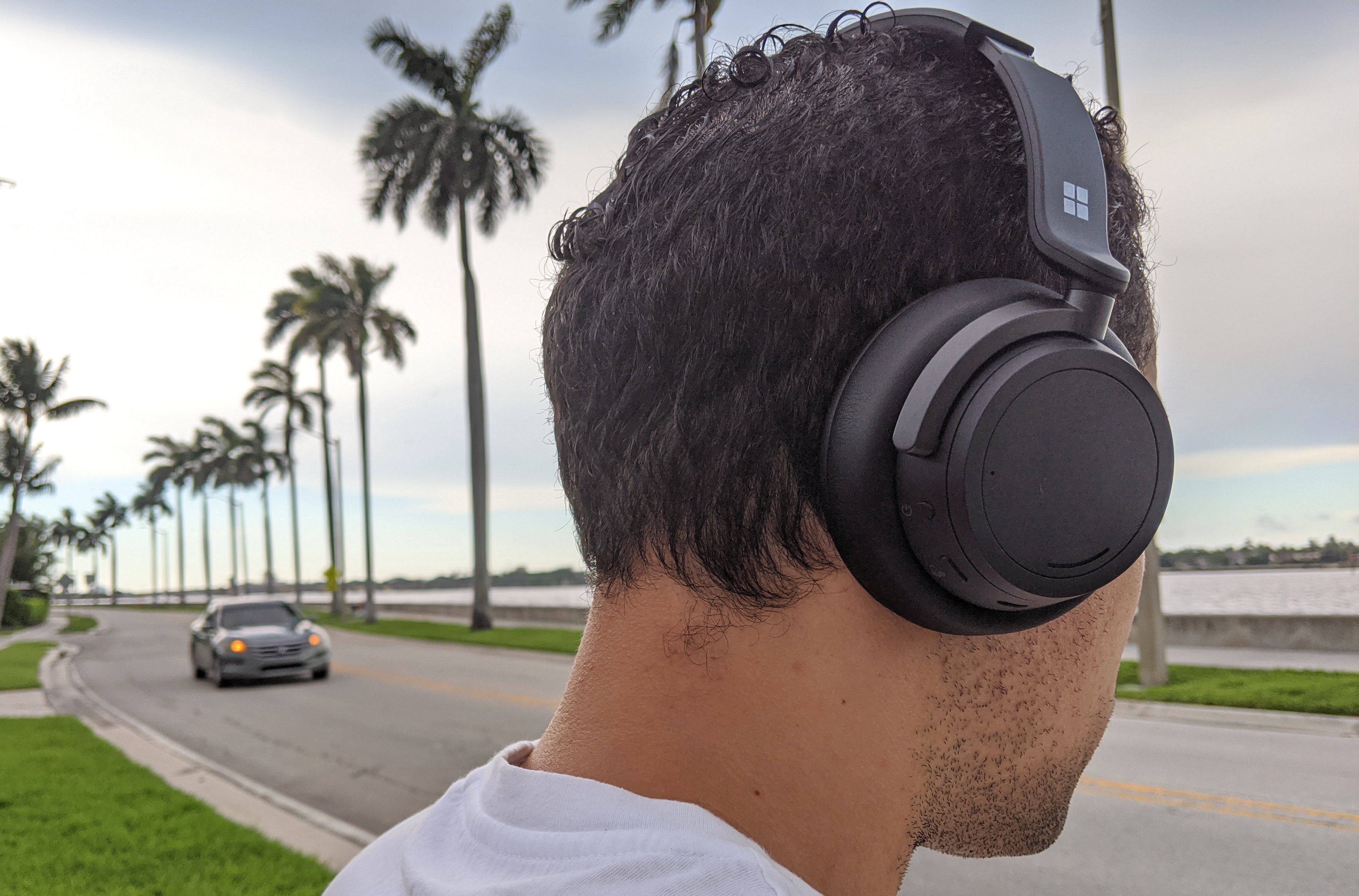
At medium, the headphones blocked out some background noises like my dishwasher and TV, but high-frequency noises like car horns and doorbells sounded very loud. When raising ANC levels, common distractions like cat meows and my fiancée’s Zoom calls were completely silent. Other sounds like my door buzzer went unheard from a distance, though there were times I could hear the audio blasting out of my fiancée’s iPhone speaker from only a few feet away. The Bose 700 has shown it’s most capable of keeping loud ambient sounds to a minimum.
Bringing ANC down to the lowest level enables ambient listening mode, which lets in noise to hear what is happening around you. It doesn’t work well on the Surface Headphones 2, and a feature best suited for sport headphones. The background hissing issue that many reviewers complained about on the original model is still present and there is an echo effect when people speak.
Microsoft Surface Headphones 2: Sound quality
Here is another category where very little has changed. Microsoft’s 40mm Free Edge drivers are the driving force behind the Surface Headphones 2, giving the headphones lively and spacious audio performance. Qualcomm aptX support has also been added to enjoy hi-res sound on compatible devices and music streaming services.
Microsoft tuned the default signature to be flat, meaning frequency response is uniform to produce accurate sound, free of dips. What you get are impactful lows that leave room for mids and highs to shine. Enjoying the laidback, funky vibes of EPMD’s “It’s My Thing,” my head was instantly bopping to the song’s infectious bassline, which knocks hard and sounds crisp. What surprised me most was how the headphones recognized subtle nuances that I had never even noticed after two decades of bumping this track; the high-pitched tambourine was striking and steady throughout the entire production.
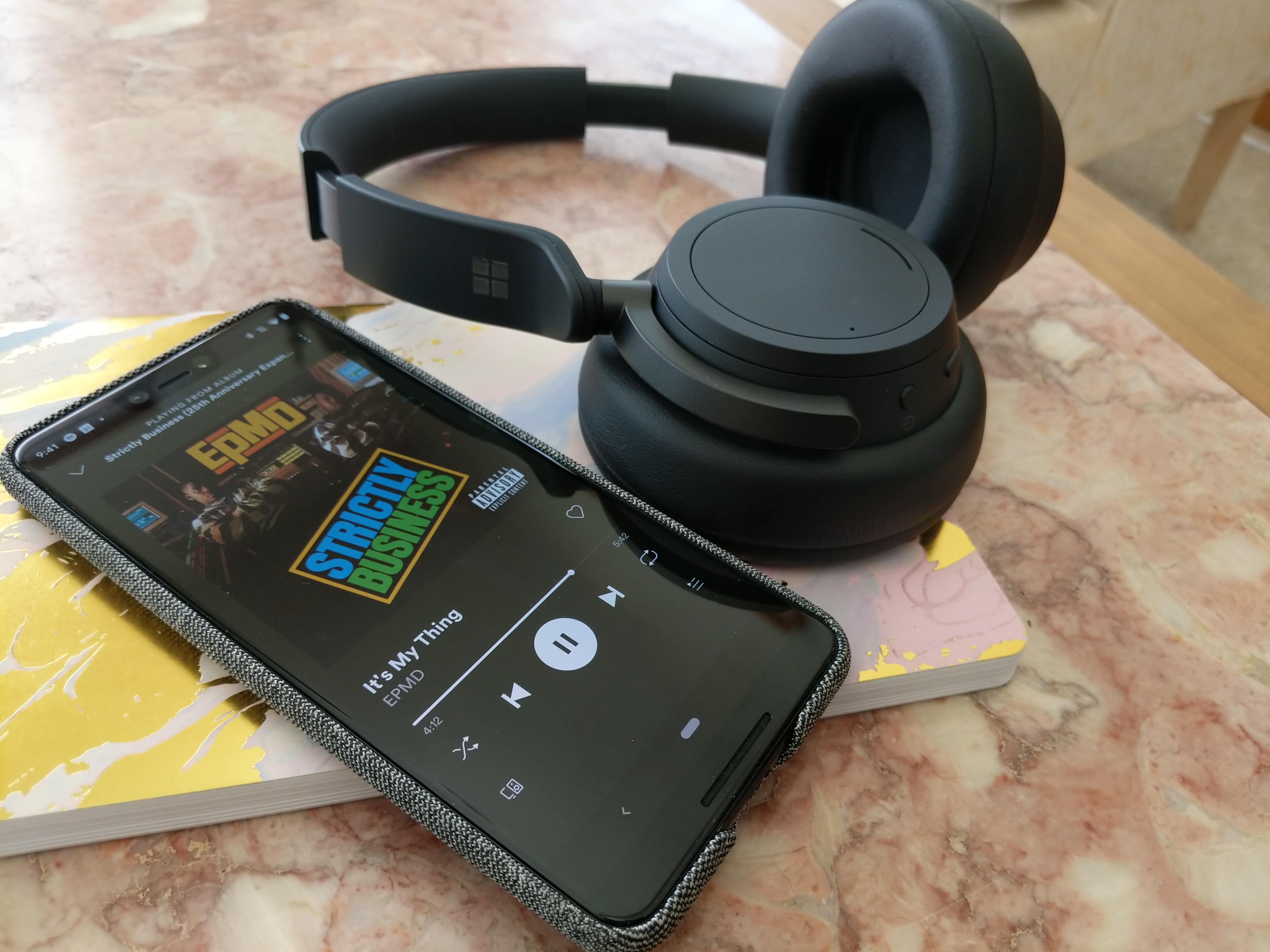
Green Day’s “Basket Case” brought on the teenage angst in sonic form, as the accentuated cymbals and driving bass drums got my adrenaline pumping before hitting the weights. The midrange was prominent, as Billie Joe Armstrong’s vocals were clear and held strong over the dominant guitar riffs. To calm things down, I pulled up some smooth jazz classics like the live version of Ahmad Jamal’s “But Not For Me.” The entire performance was a serene listen that gave every hi-hat tap and piano key strike substance.
As much as I like how the Surface Headphones 2 sounds, it isn’t perfect. The bass levels are still aggressive and produce unflattering noises (e.g. distortion, fuzz) on boom-heavy records. Give a listen to some of the joints on Kanye West’s 808s and Heartbreak to see what I’m talking about. The electric synths on “See You In My Nightmares” felt like they were turned up to 11, masking Lil Wayne’s vocals and pounding my eardrums to the point of exhaustion. You might also notice on intentionally distorted tracks like Muse’s “Hysteria” that the effect comes on too strong, resulting in unpleasant results.
This is where the Bose 700 and WH-1000xM3 have an advantage, especially Sony’s noise-cancellers, which don’t hold back on boom and maintain a well-balanced soundstage across all music genres. Something else that hinders audio performance is the aux cable. Bass and volume take a steep drop in wired mode. The other issue I have with the accessory is that the cable is fragile and very thin, so you’ll want to be mindful not to tug too hard on it.
Microsoft Surface Headphones 2: Surface Audio app and special features
On the original Surface Headphones, users were required to download the Cortana app to access extended features. Not anymore. Microsoft has rebranded it the Surface Audio app and carried over most of the same features, while eliminating a handful of others.
The EQ is still the most useful of the bunch, letting you select from five sound presets (Flat, Classical, Jazz, Pop, Rock) that can be tweaked to your like liking. It’s limited when compared to other sound personalization apps, but you can create and save multiple audio profiles. I found the engineering on half of these presets to be off, with Jazz being excessively boomy on hip-hop songs and Rock pumping out weak bass response. Pop was fine for indulging in ‘90s boy band selections. Ideally, you’ll want to stick with the Flat preset and adjust to your hearing.

One of the headphones’ most unique features is voice dictation for Windows programs (e.g. Word, Outlook). Keep in mind this requires a Microsoft 365 subscription to use. Based on my testing, it worked fine, though I couldn’t tell whether it was the mics on my MacBook Pro or the headphones that picked up my voice. I’ll be sure to provide more insight the further along I test this feature.
Other than some video tutorials and toggle options for the controls, noise cancellation, and firmware updates, there aren’t any other big features. Gone are Spotify integration and the ability to create different lists that the headphones can read back to you. We’re hoping these are brought back into the fold via future update, along with the promised Play My Email feature that is only available on iOS devices; Android is coming soon.
Note: To avoid any confusion when pairing, make sure to rename the device in the app from ‘Microsoft Headphones’ to ‘Surface Headphones 2’ (or any name you please).
Microsoft Surface Headphones 2: Battery life
Microsoft increased battery life from 15 to 20 hours. This is the same playtime as the Bose 700 (with ANC on) and is 10 hours less than the WH-1000xM3. More importantly, the headphones don’t last as long as advertised and drain a lot of power.
Constant streaming, high volume, and maxing out the ANC levels factors heavily into playtimes. My trial run saw the headphones last about 15 to 16 hours on a full charge. One day I saw the battery percentage drop from 70% to 40% after about 2 hours of listening.

The only pro is that the Surface Headphones 2 can generate an hour of playtime on a 5-minute charge, which is decent if you want to hear a full-length album or jump on a conference call. It also means the headphones fully charge at an insanely fast rate; I was at 100% in under an hour after depleting the battery.
Microsoft Surface Headphones 2: Call quality
The Surface Headphones 2 is one of the better-calling headsets out there, delivering loud and clear communication on both ends. The noise-cancelling mics make a huge difference and block out a large amount of background noise. When taking my fiancée’s call outside, she didn’t even hear the airplane flying above me. That’s impressive when considering we’re very close to the Palm Beach International Airport.
You can take calls in both wireless and wired modes, though there is one caveat: the latter uses the mic on the cable rather than the ones on the headphones. Don’t even waste your time because there is a ticking static noise that comes from the microphone module. Also, voices on the other end go in and out.
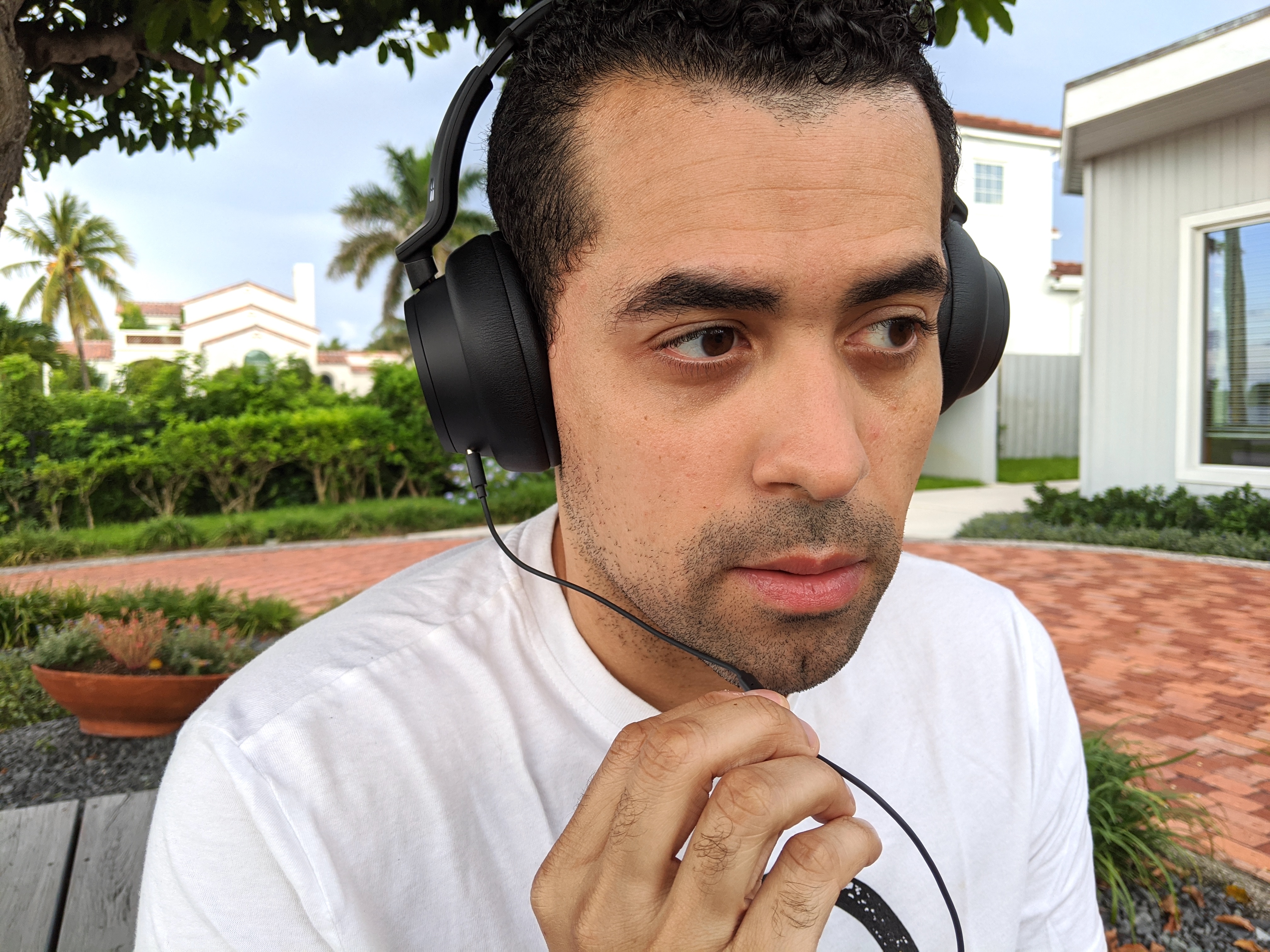
Pairing to devices remains a breeze on the Surface Headphones 2. The moment you power the headphones on, they automatically appear on the available devices list and connect instantly to devices when selected. Repairing is even quicker, especially on macOS, which I have always had issues with when testing other headphones, but not these. Bluetooth range is solid too, granting about 40 feet of wireless listening from your audio source.
The Surface Headphones 2 also comes with multipoint technology, letting you connect up to 10 devices simultaneously. Switching from my Google Pixel 3XL to my MacBook Pro was instant. What’s incredible about the feature is how it doesn’t scramble functionality between the devices; I could run Spotify on my phone and manage playback on the laptop command bar without a hitch. Not having to disconnect from one device to jump onto another is refreshing.
Microsoft Surface Headphones 2: Verdict
The Microsoft Surface Headphones 2 is a worthy successor that does a fine job of combining dynamic audio and smart features into a functional, aesthetically appealing design. Music sounds warm at times, though the flat signature keeps it well balanced to enjoy faint details in recordings. Innovative controls like the dials and Microsoft 365 integration improve ease of use and provide different ways to interact with the headphones. Wireless performance is another high point, maintaining strong connectivity across several devices at once, no matter the platform.
Sadly, the few upgrades Microsoft implemented don’t live up to their promises. It’s nice to see the boost in playtime, but the headphones consume a lot of energy and give you about 4 hours less than what’s advertised. Some of the removed options from the Cortana app would have also enhanced functionality and given the Surface Audio app more to work with, especially when compared to more feature-laden options like Jabra Sound+ and Sony Headphones Connect.
If you’re looking for the absolute best noise-cancelling experience at a similar price point, then the Sony WH-1000xM3 is an amazing alternative, along with the top-dollar Bose 700. Otherwise, the Surface Headphones 2 can be a rewarding purchase for multiplatform users.
A lifestyle journalist with an affinity for consumer products, Alex has over a decade of experience and has worked with popular publications such as Complex, Thrillist, Men’s Health, Gear Patrol, AskMen, and Hoop Magazine. He currently focuses on audio, reviewing the most coveted headphones in the market for both Tom’s Guide and Laptop Magazine.
